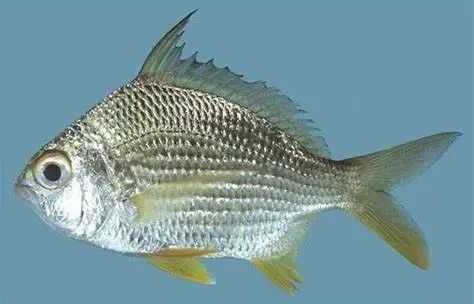Characterized by a robust, laterally compressed body that grows up to 20 centimeters in length, Gerres abbreviatus features a deep, oval profile with a short, steep forehead—a trait that gives it the "short" descriptor in its common names. Its coloration ranges from silvery-white on the ventral side to a pale olive or golden hue on the dorsal surface, often adorned with faint, vertical bars or dark spots that provide camouflage among sandy seabeds and seagrass meadows. Large, reflective eyes and a small, protractile mouth adapted for sifting through sediment distinguish this species, enabling it to feed on small invertebrates, such as worms, crustaceans, and mollusks buried in the substrate.
Inhabiting estuaries, lagoons, and shallow coastal areas with sandy or muddy bottoms, Gerres abbreviatus is a schooling fish that prefers waters less than 30 meters deep. During the day, it forms dense aggregations near the shore, using its keen senses to detect prey stirred up by tidal movements or wave action. At night, the schools may disperse as individuals forage more actively. Breeding typically occurs in the warmer months, with females releasing eggs into the water column, where they are fertilized externally and carried by currents until hatching. Juveniles often seek shelter in mangrove roots or shallow tidal pools, gradually moving to deeper habitats as they mature.
While not a primary target for large-scale commercial fishing, Gerres abbreviatus holds local importance in artisanal fisheries, valued for its delicate flesh and ease of capture in shallow waters. However, it faces threats from habitat degradation due to coastal development, pollution, and overfishing in some regions. As a species that links the benthic and pelagic zones of coastal ecosystems, its conservation is crucial for maintaining the health of estuarine and nearshore habitats. Initiatives such as mangrove restoration, sustainable fishing practices, and the establishment of marine protected areas can help safeguard the future of this compact yet ecologically significant mojarra.










